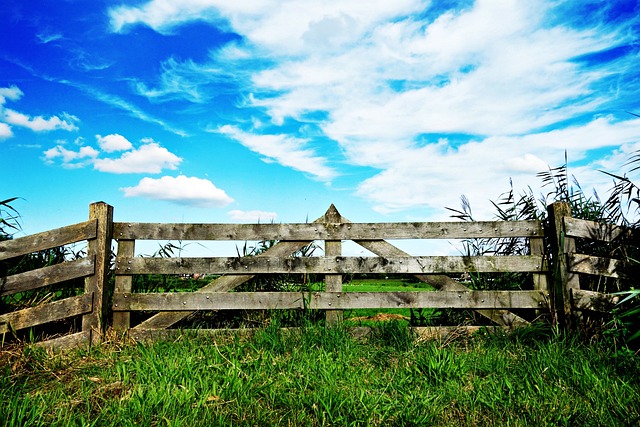“Enhance your New Bedford, Massachusetts property with a DIY fence installation—a project that offers both functionality and aesthetic appeal. This comprehensive guide equips homeowners with the knowledge to navigate the process successfully. From understanding local regulations and choosing climate-suitable fence types to gathering the right tools and materials, we cover it all. Learn how to prepare your yard, set posts, attach rails and panels, and add finishing touches that will stand the test of time. Get ready to transform your outdoor space with a durable and stylish new fence.”
- Assess Your Fence Needs and Property
- – Understanding local regulations and property lines
- – Evaluating fence types suitable for New Bedford climate
- Gathering Materials and Tools
Assess Your Fence Needs and Property
Before starting your DIY fence installation project, take time to assess your specific needs and property. Consider factors like the style, material, and height that best suit your landscape and privacy requirements. Examine your property lines and ensure any new fence aligns with local regulations and neighbor agreements.
Measure existing fences, gates, and surrounding structures for accurate planning. Take note of any challenges like trees, utility lines, or uneven terrain that might impact installation. This thorough evaluation will help you make informed decisions when choosing materials, tools, and the overall design of your new fence.
– Understanding local regulations and property lines
Before installing a fence, New Bedford homeowners must familiarize themselves with local regulations and understand their property boundaries. Each municipality has specific rules regarding fencing, including height restrictions, distance from property lines, and materials permitted. Failing to comply with these regulations can result in fines or even the removal of the fence.
Property lines are often not always clearly marked, especially in older neighborhoods. It’s essential to conduct a thorough survey of your land and those adjacent to ensure accurate installation. Marking out the fence’s position along property lines will help avoid disputes with neighbors and ensure your fence is erected legally and correctly.
– Evaluating fence types suitable for New Bedford climate
When considering DIY fence installation in New Bedford, Massachusetts, it’s crucial to evaluate which fence types are best suited to the local climate. The region experiences a humid continental climate with cold winters and warm summers, subject to occasional storms and high winds. This environment requires fences that can withstand varying weather conditions without succumbing to rot or damage.
Wooden fences, popular for their aesthetic appeal, need regular maintenance to protect against moisture and insects common in the area. Vinyl fencing is a more durable option, offering resistance to rot, rust, and warping. Metal fences are also suitable, though they may require additional coating to prevent corrosion from salty winter roads and summer humidity. Each material has its advantages, so homeowners should choose based on personal preference, budget, and long-term maintenance considerations tailored to New Bedford’s climate.
Gathering Materials and Tools
Before you begin installing your new fence, it’s crucial to gather all necessary materials and tools. New Bedford, Massachusetts homeowners should plan for a variety of essentials including posts, panels, brackets, concrete, string line, measuring tape, hammer, level, drill, and any additional hardware specific to your fence style (e.g., tension bands for wooden fences). Ensure you have enough supplies on hand to complete the entire project without needing to make frequent trips to the store.
Organize your materials in a logical order and lay them out where they’ll be easily accessible during installation. Clear a path along the perimeter of where your fence will stand, free from obstructions that might impede your work. A well-prepared workspace will not only streamline the process but also contribute to ensuring a more accurate and level fence placement.
